The deep sea has long been one of the most mysterious frontiers on Earth, with vast stretches of unexplored ocean hiding creatures unknown to science. In 2006, National Geographic introduced some of the most remarkable marine species discovered that year, as part of a global research effort led by the "MAR-ECO" project. This large-scale scientific expedition, involving over 110 scientists from 16 countries, conducted unprecedented sample collection and analysis along the Mid-Atlantic Ridge, unveiling new and strange deep-sea life forms. Since then, further exploration has revealed even more fascinating species from the ocean's abyss, showcasing the incredible biodiversity that thrives beneath the waves.
Daruma Squid
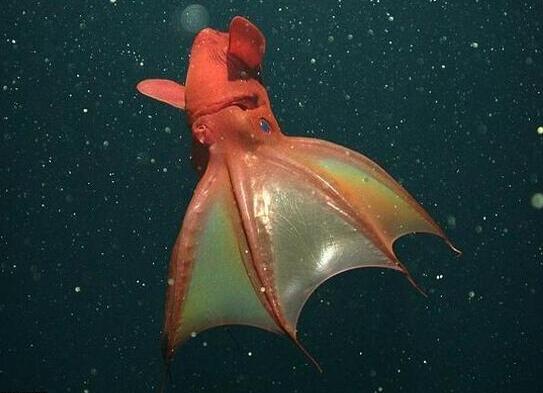
One of the key highlights of the 2006 MAR-ECO expedition was the discovery of the Daruma Squid, a previously unknown species. Found in the northern part of the Mid-Atlantic Ridge at depths of 3 kilometers, this small, red squid has semi-transparent eyes and tentacles covered in suction cups. Its compact body and strong jaws suggest a powerful ability to chew prey, making it a unique predator in the deep ocean. The squid earned its name for its round, doll-like appearance, reminiscent of Japan’s Daruma dolls.
2. Antarctic Jellyfish

Another 2006 discovery was the Antarctic Jellyfish, a rare creature living under the thick ice layers of the Antarctic seas. These tiny jellyfish, which survive in one of the most extreme environments on Earth, were captured on film after researchers drilled through 700 meters of ice. This previously unseen species has adapted to life in total darkness, thriving in the frigid waters beneath the polar ice caps.
3. Jurassic Shrimp
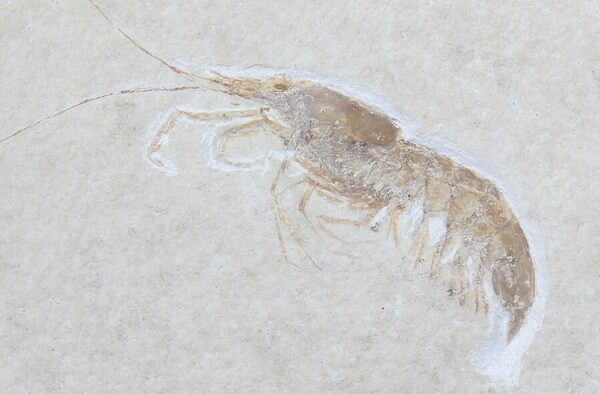
One of the more astonishing finds was the Jurassic Shrimp, discovered in the Coral Sea off northeastern Australia. This species, thought to have been extinct for over 50 million years, was found living at depths of 400 meters. Dubbed a "living fossil," the Jurassic Shrimp offers a glimpse into ancient marine ecosystems and has fascinated scientists with its unexpected survival.
4. Isopod Crustacean
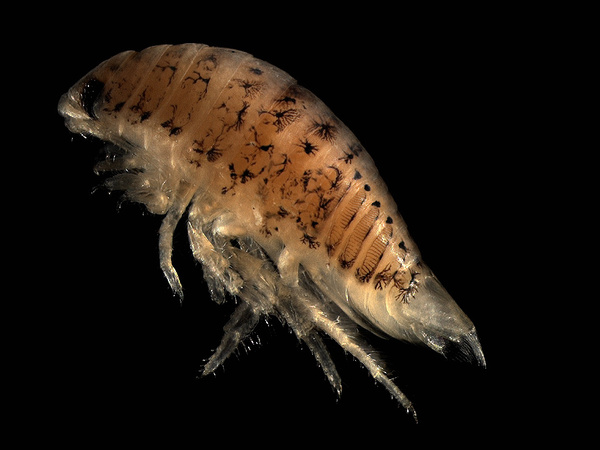
Among the crustaceans discovered in 2006, a new species of isopod was found near Antarctica. These tiny creatures, about the size of a pinhead, are rare and vital to understanding the biodiversity of the deep sea. The discovery of these isopods contributes to the broader knowledge of microscopic marine life that plays essential roles in ocean ecosystems.
5. Yeti Crab

The Yeti Crab, another 2006 marvel, was discovered near hydrothermal vents in the deep Pacific Ocean, close to Easter Island. This bizarre-looking crab has no functional eyes and is covered in hair-like bacteria that help protect it from the toxic chemicals emitted by the volcanic vents it inhabits. Its unusual appearance and adaptation to extreme environments make it a symbol of the strange life forms that can survive in even the harshest conditions.
6. Amphipod Crustacean

Found at depths of 5 kilometers in the North Atlantic’s Sargasso Sea, the Amphipod Crustacean is a shrimp-like creature with an otherworldly appearance. Feeding on dead fish and marine debris, these scavengers are well-adapted to the immense pressure and darkness of the deep sea. Their discovery highlights the wide range of life forms that thrive in extreme ocean environments.
Since 2006, marine research has continued to unveil new and extraordinary species that redefine our understanding of ocean biodiversity. Here are some notable discoveries in subsequent years:
7. Zombie Worms (Osedax)
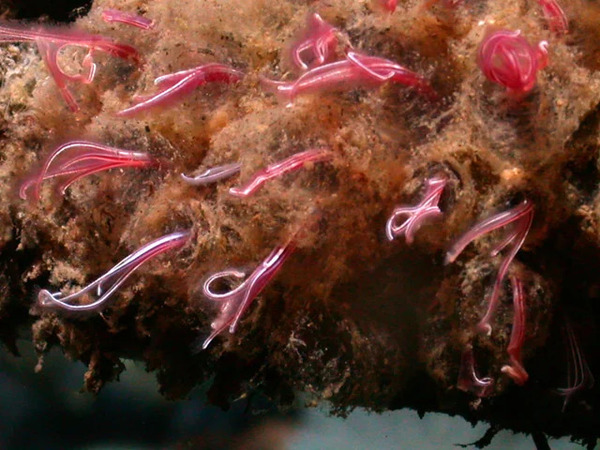
Discovered in 2007, these unusual worms consume the bones of dead aquarium/52-marine-animals.html">marine animals. Known as "Zombie Worms," they break down bones using symbiotic bacteria, playing a vital role in deep-sea nutrient recycling. These creatures live at depths of over 3,000 meters, where food is scarce, making them a key part of the ocean’s deep ecosystems.
8. Giant Sea Spider (Pycnogonida)

In 2008, new species of giant sea spiders were identified in the Southern Ocean. With leg spans reaching up to 30 cm, these spiders are some of the largest of their kind. Adapted to cold, deep waters, they use their long legs to move and feed, showcasing the variety of adaptations needed to survive in such extreme environments.
9. Vampire Squid (Vampyroteuthis infernalis)

While known to science for some time, recent studies of the Vampire Squid have revealed new insights into its unique behavior. This creature, discovered in 2010, lives in oxygen-poor environments between 2,000 and 3,000 feet deep. Unlike typical squids, it doesn’t actively hunt but instead feeds on marine detritus, using its bioluminescent abilities to evade predators in the dark ocean depths.
10. Goblin Shark (Mitsukurina owstoni)
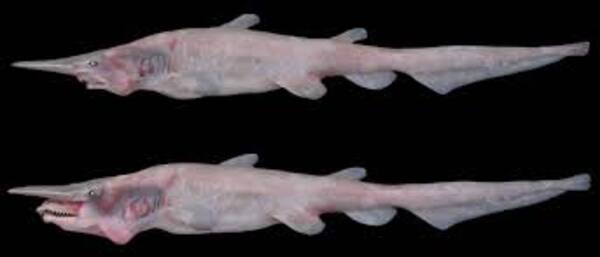
In 2011, the deep-sea Goblin Shark was spotted in new regions, providing fresh insights into its distribution. Known for its distinctive long snout and protruding jaws, this rare and elusive shark is a "living fossil," with origins dating back over 125 million years. Its ability to remain undetected highlights the vast unknown realms of the deep sea.
11. Glass Squid (Cranchiid Squid)
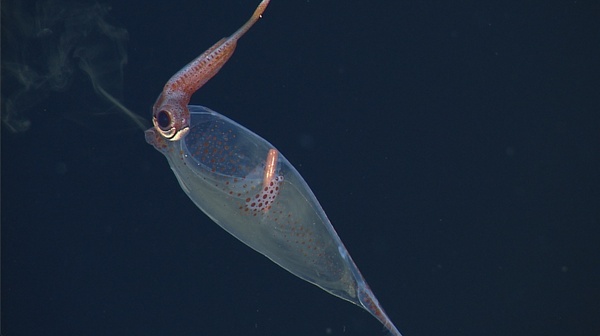
New species of glass squids were discovered in 2012, featuring transparent bodies that make them nearly invisible in the water column. These squids use specialized buoyancy control organs to remain suspended in the deep ocean, helping them avoid predators while conserving energy.
12. Humpbacked Cusk-Eels (Abyssicola)
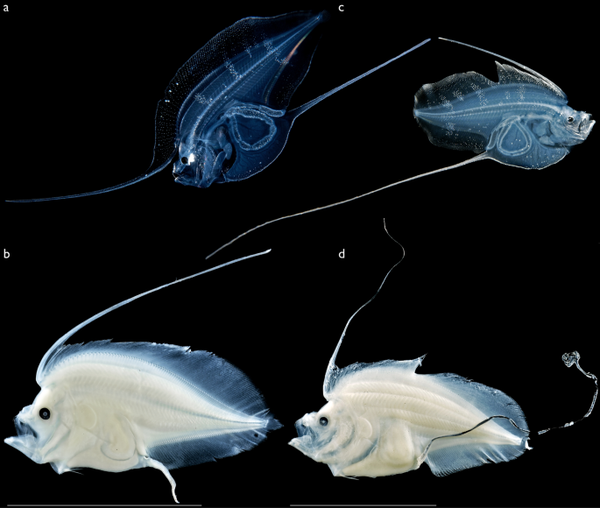
Found in 2014 at depths exceeding 2,000 meters, new species of humpbacked cusk-eels were identified in both the Atlantic and Pacific Oceans. These fish have a distinctive humpbacked shape and provide further insights into fish life in the deep sea.
13. Sea Salps

In 2016, new species of sea salps were discovered. These gelatinous organisms are important filter feeders in marine food chains, reproducing rapidly in nutrient-rich waters. Their adaptability makes them key indicators of changes in ocean ecosystems, as they are sensitive to shifts in water conditions.
14. Scaly-foot Gastropod (Chrysomallon squamiferum)

Discovered in 2019 in the Indian Ocean, the Scaly-foot Gastropod is known for its extraordinary shell structure, made up of three distinct layers. This remarkable mollusk lives near hydrothermal vents and its tough shell has drawn the attention of scientists interested in biomimicry, potentially offering new insights into material sciences.
15. Bioluminescent Organisms
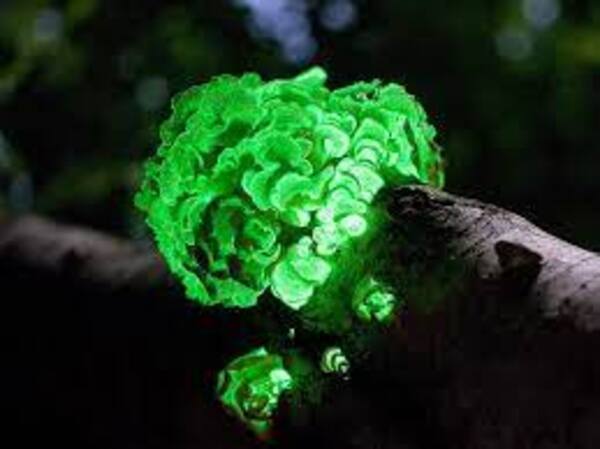
Between 2015 and 2023, multiple new species of bioluminescent organisms have been identified, including jellyfish, fish, and plankton. These creatures, which produce their own light, continue to fascinate scientists, particularly with their potential applications in biotechnology and medicine.
These discoveries showcase the vast diversity and adaptability of life in the ocean's depths, from tiny microorganisms to large predators. As technology advances and exploration continues, there is no doubt that the ocean still holds many secrets waiting to be revealed. Each new species adds to the understanding of how life thrives in the most extreme conditions, reminding us of the richness and complexity of Earth's oceans.
animal tags: Scaly-foot-Gastropod
We created this article in conjunction with AI technology, then made sure it was fact-checked and edited by a Animals Top editor.